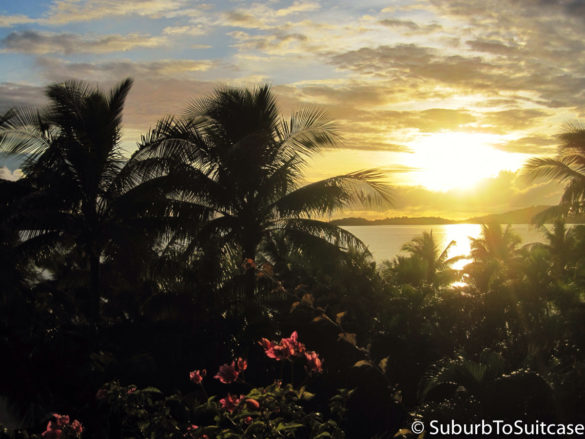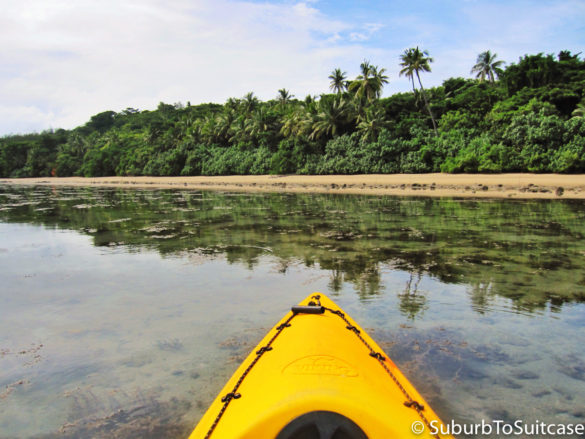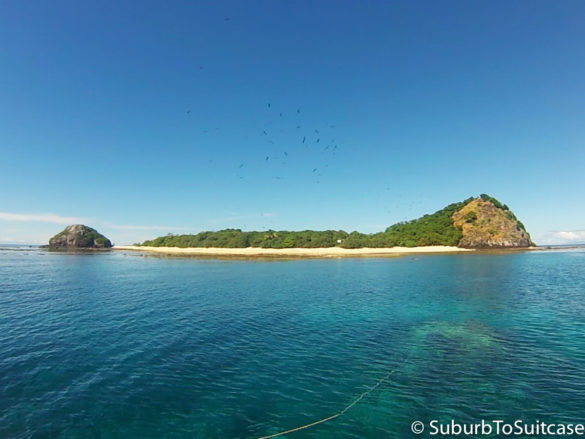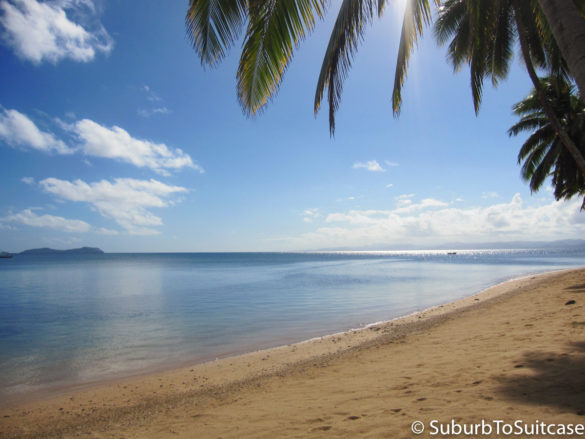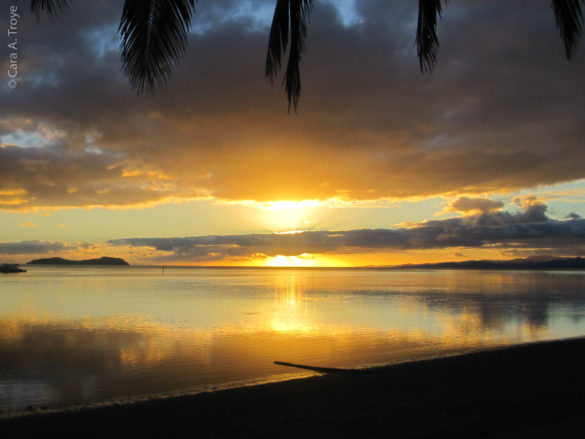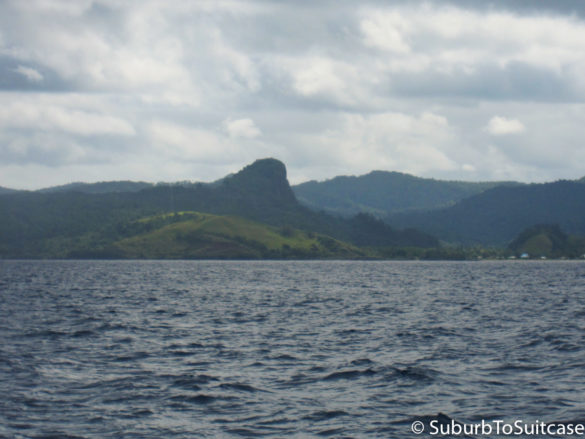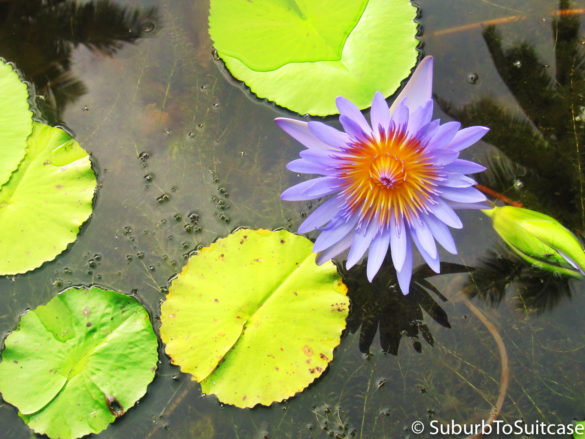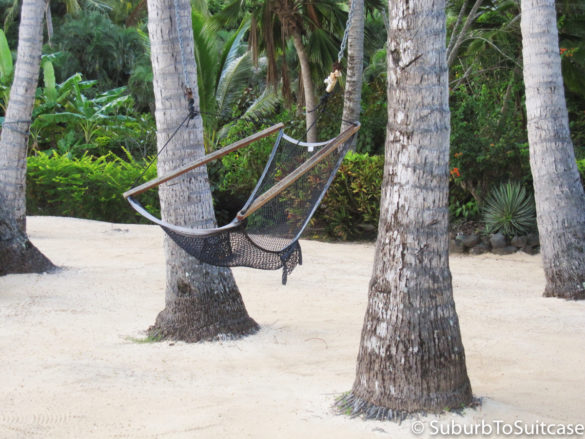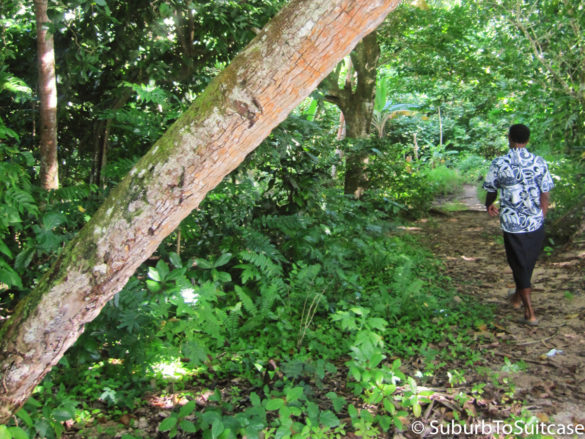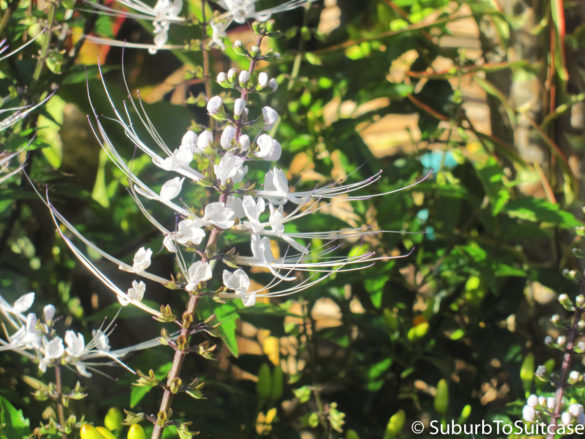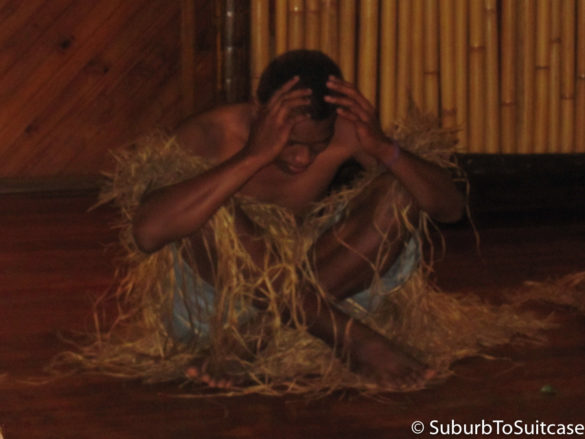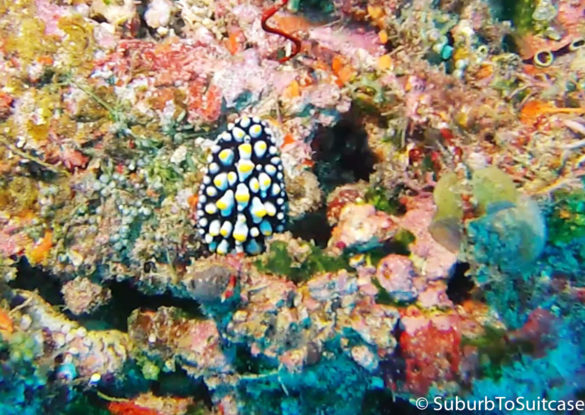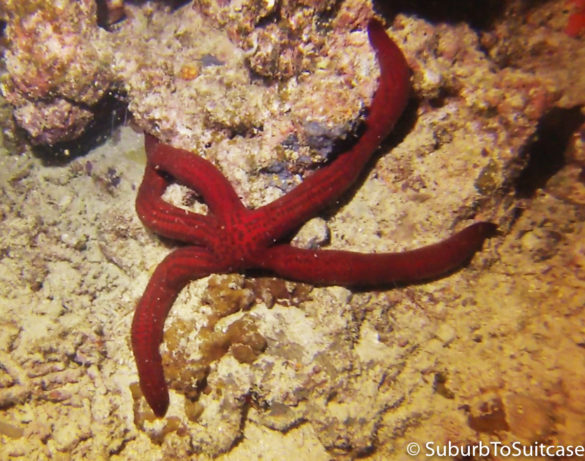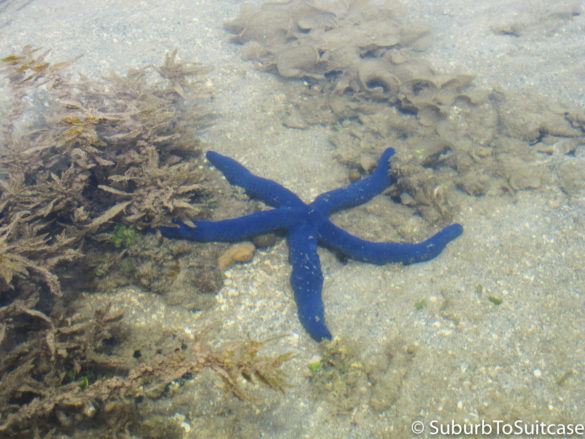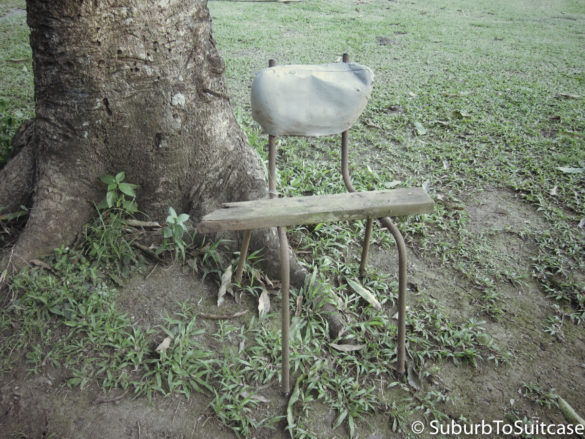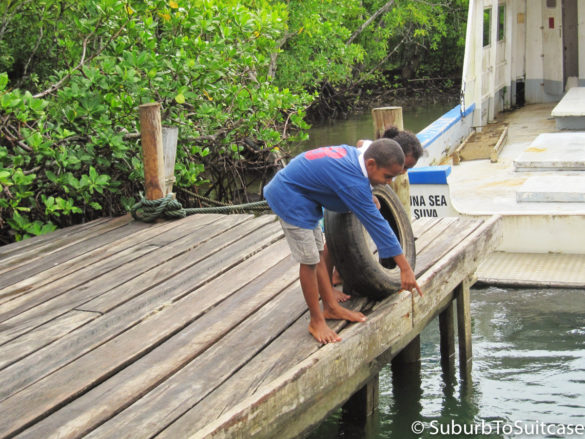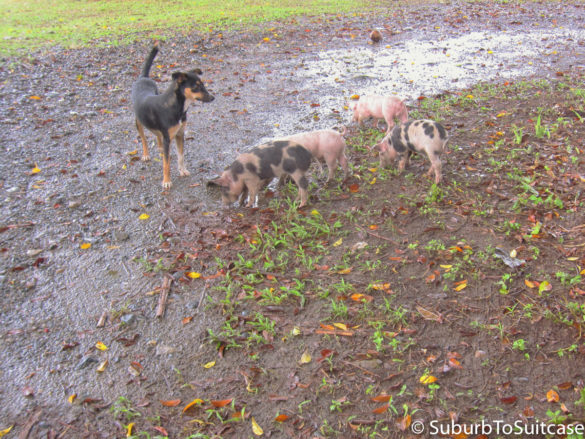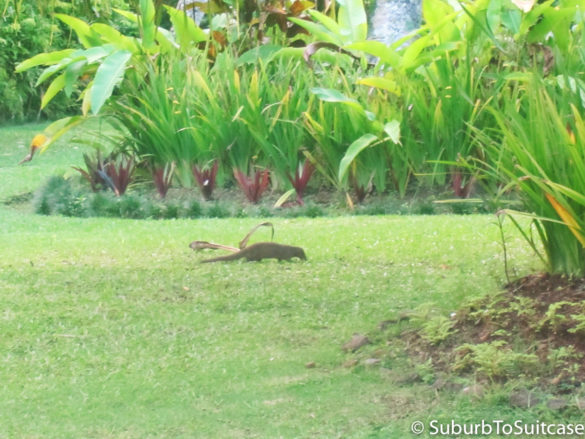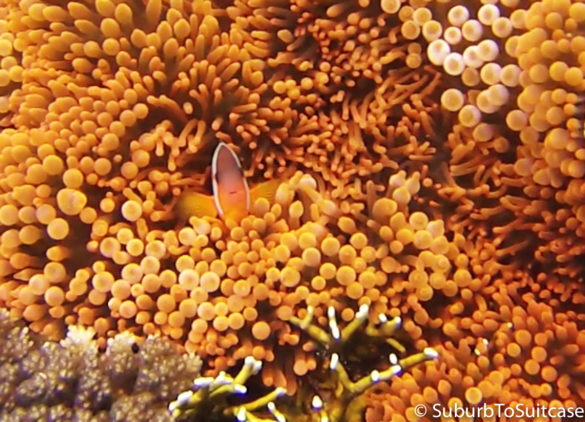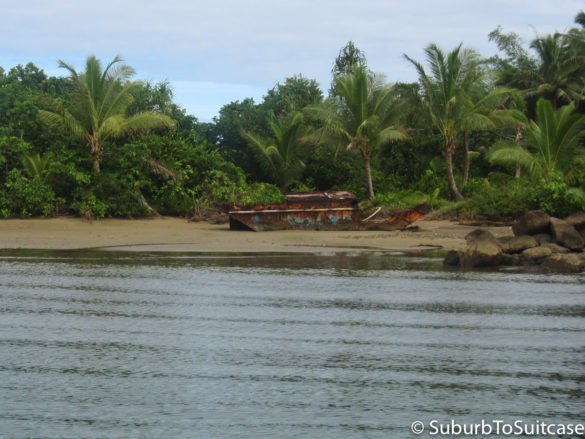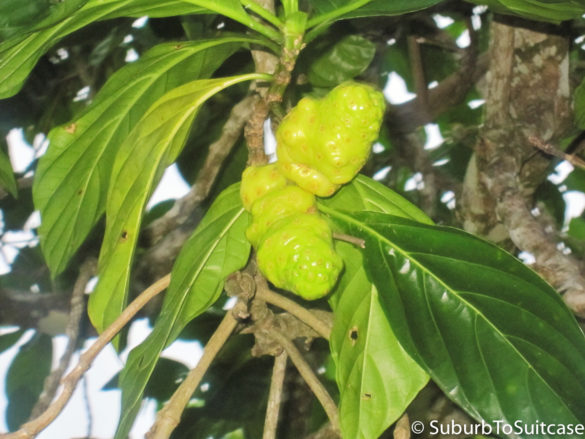Bula {warm Fijian greeting}! My stay in Fiji was spread across the islands of Viti Levu and Beqa (pronounced “Ben-gah”). From the U.S., it is a long journey to the islands, but well worth the travel time. The flight from Los Angeles to Nadi (pronounced “Non-dee”) airport on Viti Levu island is ~11 hours. Then, depending on your final destination, you may have a lengthy bus ride ahead of you (for example, Rakiraki is ~2.5 hours by bus across the North and East side of the island and Suva is ~2.5 hours across the West and South side). Vehicles drive on the left here but the roads are in good condition. Villages are fun to pass through since residents of all ages stop what they are doing and wave to bus passengers. Smiles abound in Fiji – beautiful, contagious smiles. Theirs is a community of kindness and humility, with dedication to their children and support for their elders. Fijian culture is warm and compassionate, spiritual and rich in tradition.
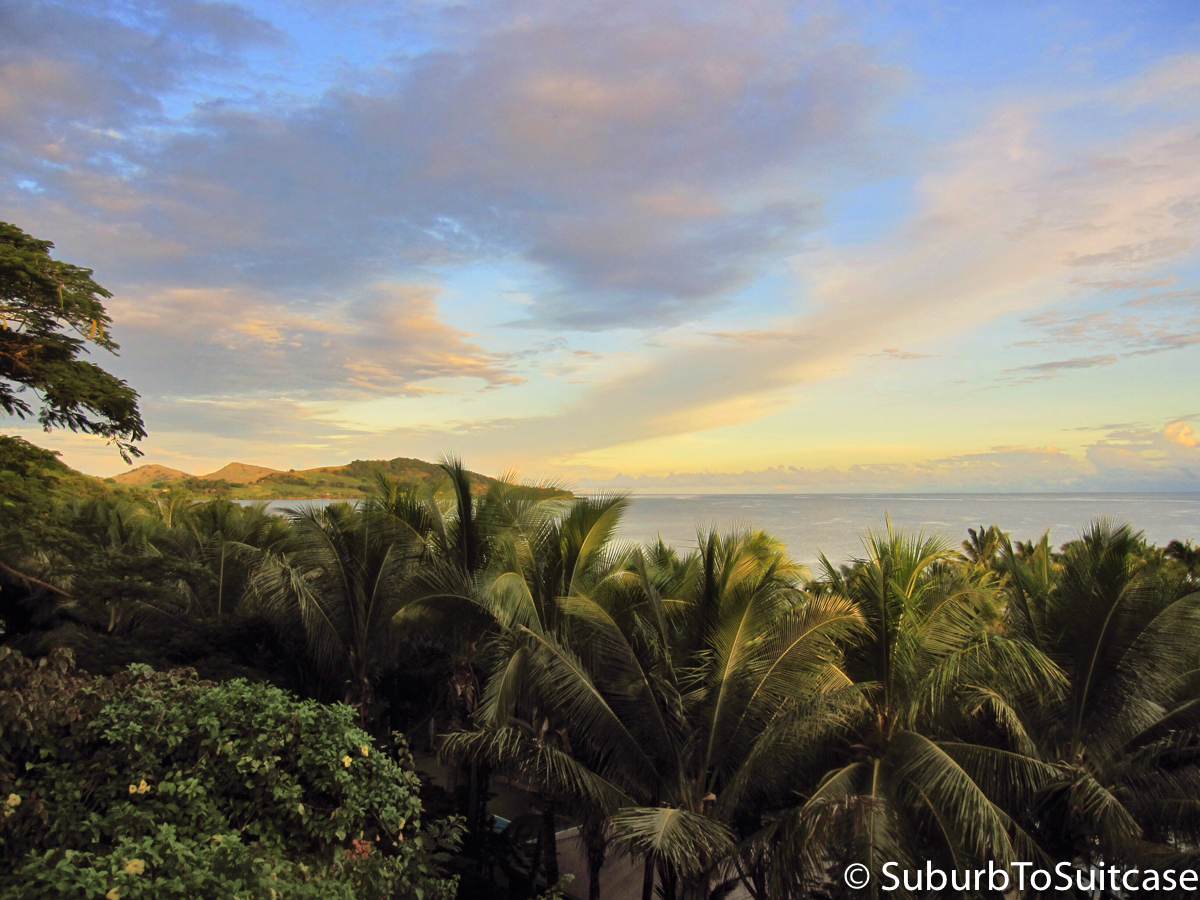
Sunrise in Fiji
Fiji is known for its world-class diving. The sites I explored in the Bligh Waters and those off the island of Beqa did not disappoint – huge Gorgonians, sea fans, beautiful soft and hard coral, colorful anemones, tropical fish, sharks (hammerheads, white tip and grey reef sharks, bull sharks, lemons, white-tips and tawny nurse sharks), exotic eels, octopus and many varieties of nudibranch. The water here is full of nutrients but less salty than the Caribbean and much less so than Galápagos, so divers can wear a little less weight. Waters are warm but I was still happy to have a 3mm wetsuit.
Daily pockets of rain were expected but did not negatively impact any plans. After all, the islands are on “Fiji time” anyway – there is no rushing or stress. Dive crews took great care in assessing currents from above the water and made quick modifications to site preferences to keep safety first. A couple of sites did have fairly strong top current and surge, but intermediate to advanced divers would find it manageable and reef hooks were available for safety stops.

Rainbows after diving
I enjoyed my time above water just as much as my time below. The island of Viti Levu is lush with rolling hills (sugar cane, cassava/tapioca and papaya grow in mass). The FIJI Water plant is located here and the island also exports mahogany wood. Farms are common along the roadside with chickens, goats and cattle. Beqa is a much smaller, remote island (~40 minutes by boat from Suva on Viti Levu) with dense palm jungles and native villages. A visitor to the islands should bring a cultural curiosity, respect for historic customs and an open mind. In turn, you will be treated with kindness and generosity. Make time to engage in conversation with the locals since this is the best way to learn about their culture, history and values.
One of my favorite memories from Fiji is the beautiful island music. “Isa Lei” is the song in the video above. This is known as the goodbye song because it is often sung for visitors upon departure. Having researched the translation, I now understand why I was so moved each time I heard the song and how my departures grew increasingly difficult, leaving my new friends on the islands. Music, especially Gospel hymns, are common in the Fijian culture. If you have time to Google the Fijian rugby team singing a cappella, it’s pretty impressive. Experiencing a traditional fire walking ceremony was also fun.

Preparing the Fire
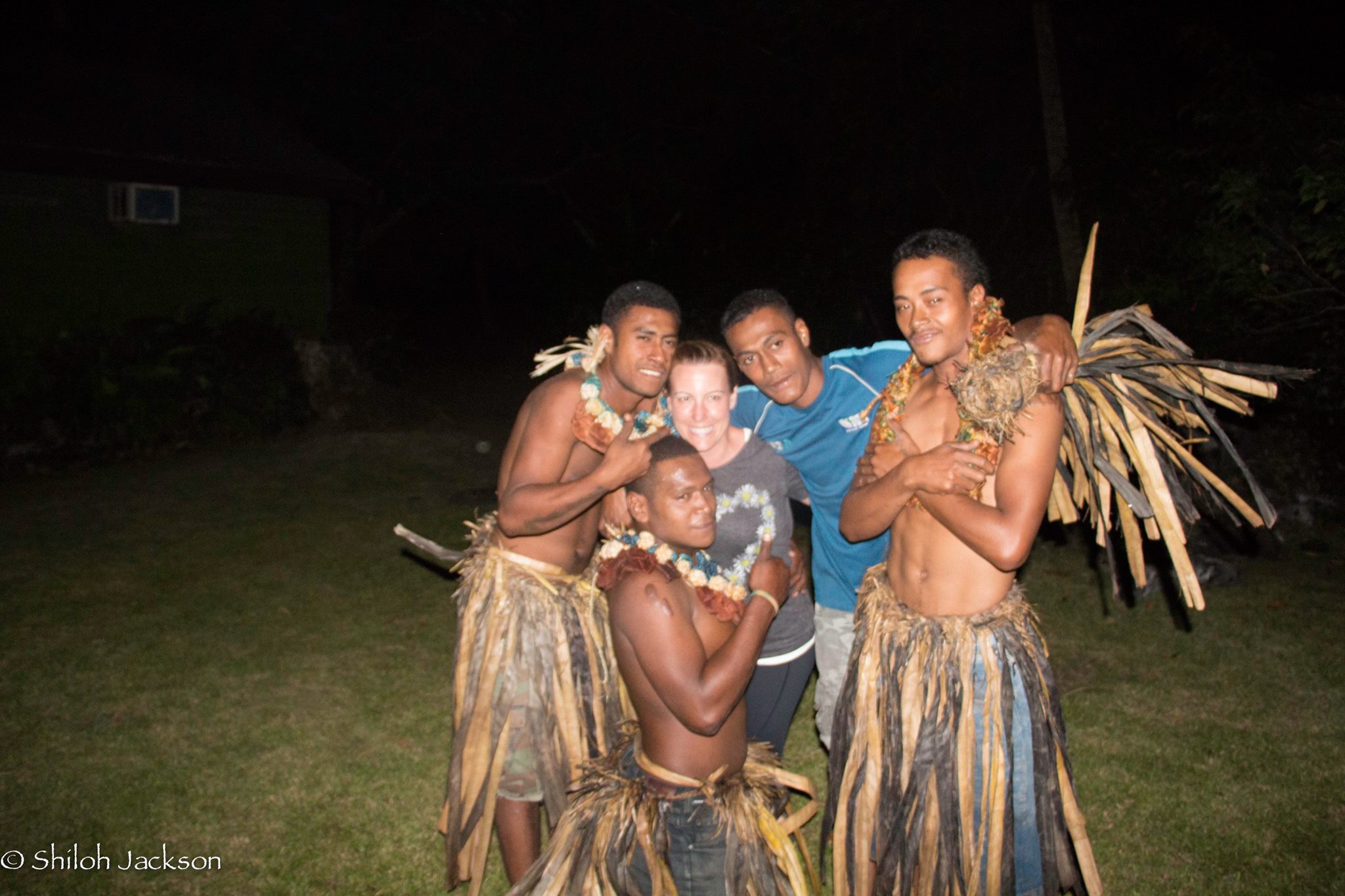
Photo of me with the fire walkers, courtesy of group travel mate, Shiloh Jackson
My other favorite memory is my experience in the village of Rukua. It was a privilege to walk with a local guide through the Beqa jungle to visit the village with permission from its chief. It is important to note that tourists should never enter an island village without an escort and permission – appropriate clothing is often required and other native customs must be observed. After removing shoes and presenting a small offering of kava (a local plant root), the Rukua chief allowed entry into his home, offered a humble welcome, shook hands, granted a quick photo and approved a walk around the village. I felt fortunate to have this experience.
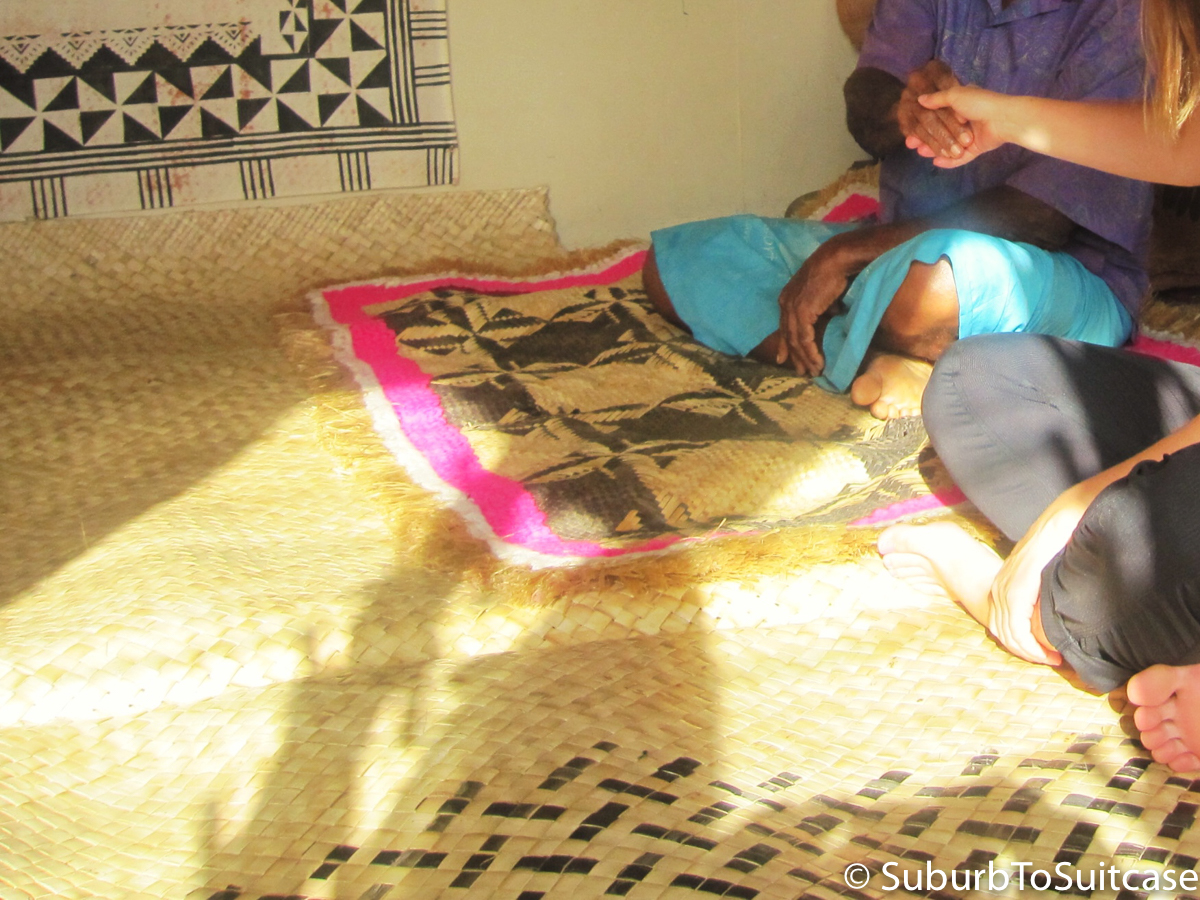
Such an honor to meet the Chief of the Rukua Village on Beqa island
Since several have inquired about my experience with kava, I am happy to share. Consumption of kava is common in the Pacific and Micronesia. While its use may vary a bit from culture to culture, it is generally shared as a drink as part of social, religious, medicinal or political gatherings. The root is harvested from the shrub, dried, pounded and often ground. At time of serving, the ground kava is poured into a cloth over a large bowl. Then, water is poured over the top and the cloth is pressed several times to mix the kava into the water. The cloth and its contents are then lifted away and the remaining liquid is moderated based on desired drink intensity (the less water added, the stronger the drink). A small bowl is used to further aerate the bowl to be sure the liquids are evenly distributed.
The host (sitting on a woven mat) then presents a cup of kava to a guest also seated on the mat. Routine claps occur between the guest and the rest of the participants and host before and after the drink has been consumed and a thank you message is sometimes offered by the participant. This process repeats around the mat and the host drinks as well. This may sound intricate and it kind of is. However, there is no rushing this process – everything happens on “Fiji time.” Results of drinking kava vary based on volume and strength of the mix, but generally speaking, the drink is sedating and comes with some numbness of the mouth and throat. It is an acquired taste. I found it to be…earthy…but more familiar after each cup. As a guest to the islands, being invited to participate in a traditional kava ceremony is an honor and it should be respected as such because it is part of the culture. As the proverb goes, “When in Rome…”
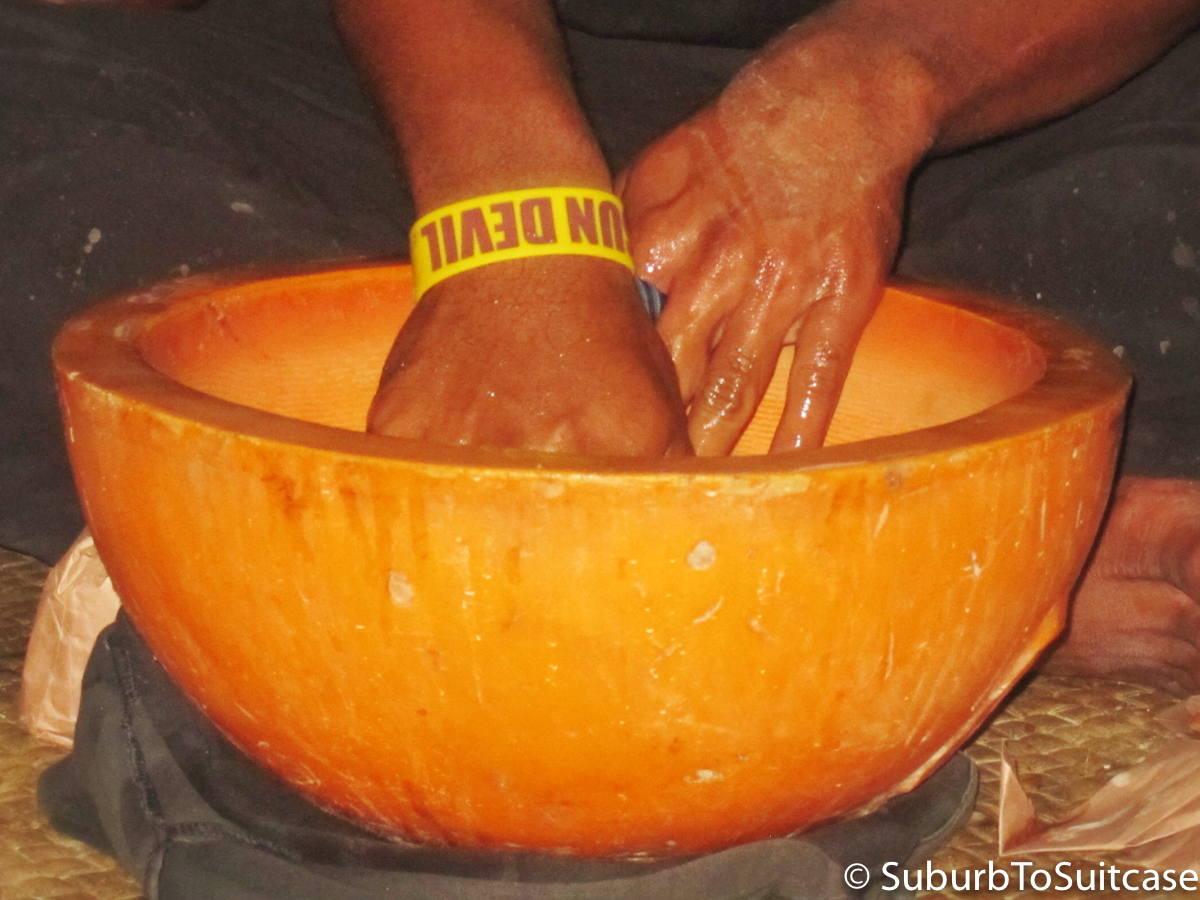
Kava Preparation – As you can see, if there is another Sun Devil within a 6,000 mile radius of Tempe, I will find you!
As for food, a visitor should expect lots of delicious fresh fish, starchy cassava root (similar to Colombian yuca) and taro leaves (similar to a sweet spinach). My tradition of enjoying a local splurge dish continues here with kokoda. This Fijian-style ceviche is often made with Spanish mackerel, lime, coconut milk, cucumber, tomato, onion, green chiles, carrot and seasonings such as coriander, salt and pepper. Seriously, delicious.
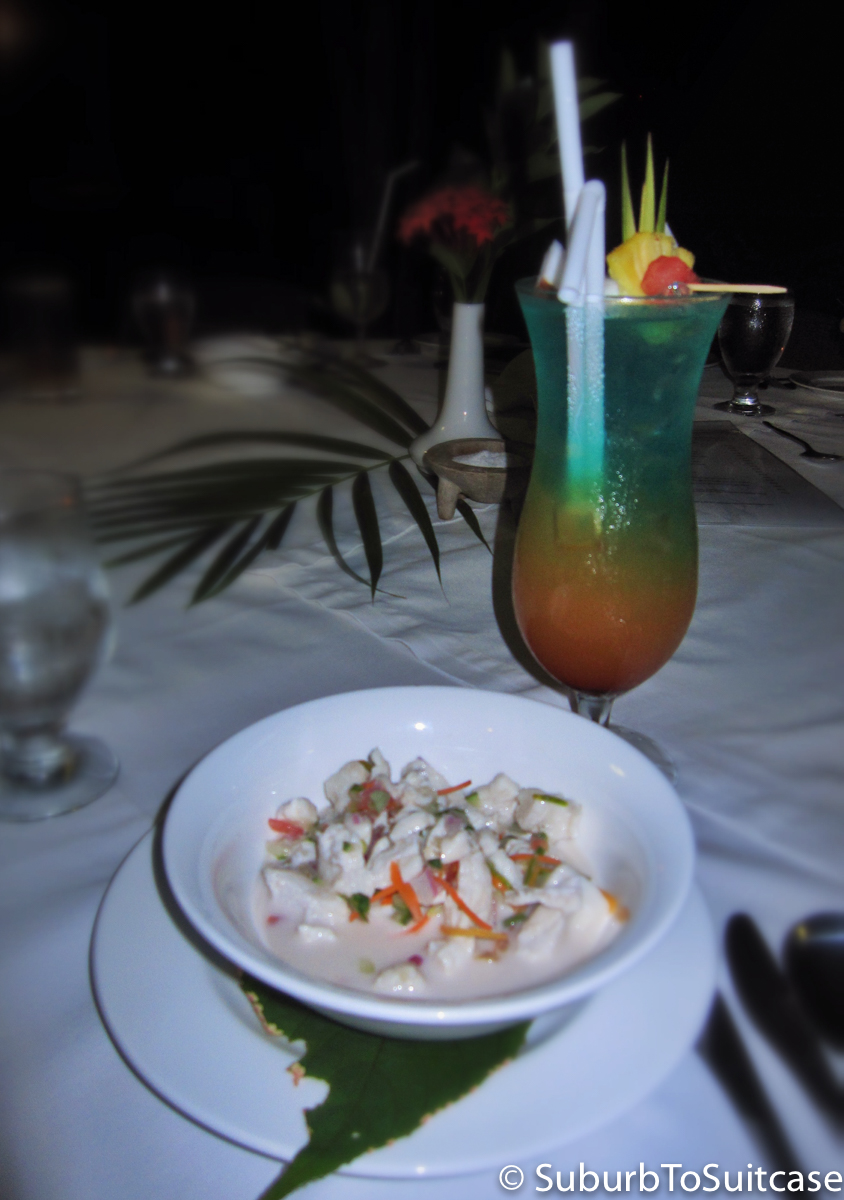
Kokoda (Spanish Mackerel Ceviche) – Yum!

